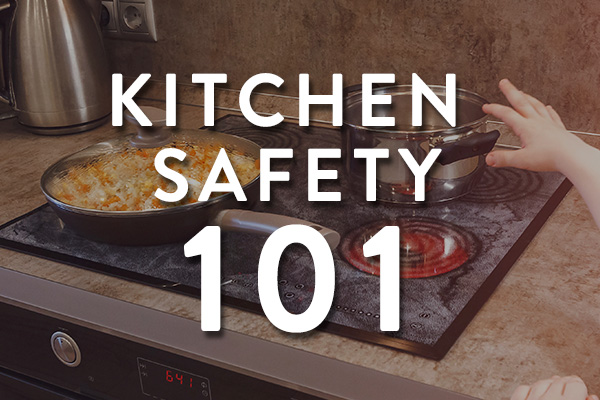
A kitchen is a dangerous place for kids. That’s why most parents won’t allow playing or running around while cooking. Some parents may not even let kids get food from the refrigerator without permission or help. Even though it’s not safe to play around in, the kitchen can still be fun when learning how to cook. Cooking isn’t something that kids can teach themselves. There are too many ways for them to get hurt!
When kids want to learn how to cook, they’ll need their parents to instruct them. Parents and adults who teach kids how to cook will expect them to follow all kitchen safety instructions and tips.
Prep Your Space
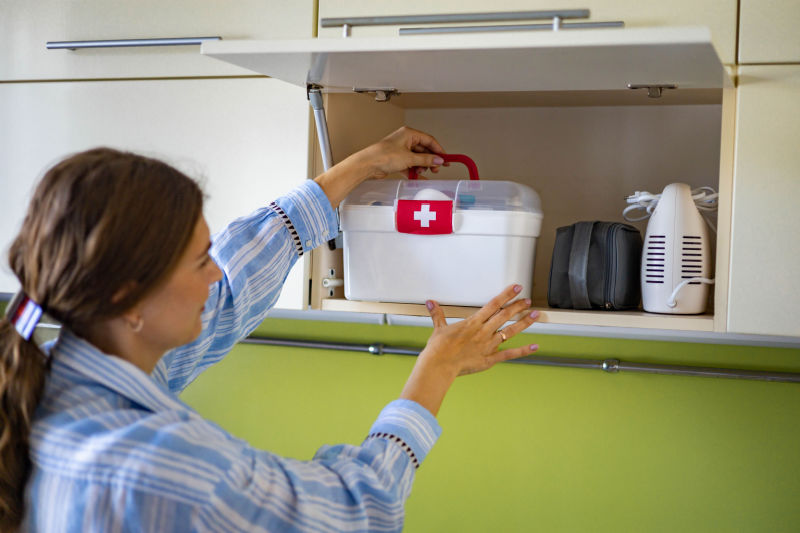
Before letting kids help in the kitchen, parents should make sure it’s safe. During this time, kids should stay out of the kitchen until their lesson starts. Parents should also keep a first aid kit in the kitchen in case someone hurts themselves. They’ll want to move harmful things out of reach, like sharp knives or loose cords. Young kids might try to use or taste things, like adult drinks or cleaning supplies, that can hurt or even kill them. That’s why parents should also lock away or move these things so that they are hard to reach.
In preparing a kitchen for cooking with kids, parents may even wish to prepare some ingredients ahead of time so they can focus on having a safe but fun time.
Wash Your Hands!

Dirty hands carry bad germs. If these germs get on food or surfaces in the kitchen, they can make everyone sick. That’s why proper hand washing is so important. Before touching anything that has to do with cooking, wash your hands with warm water and soap for at least 20 seconds. Clean beneath each fingernail and wash up to the elbows. A fun way to count down 20 seconds is to sing a song like “Twinkle, Twinkle Little Star” or “This is the Way We Wash Our Hands.”
Rules of the Kitchen
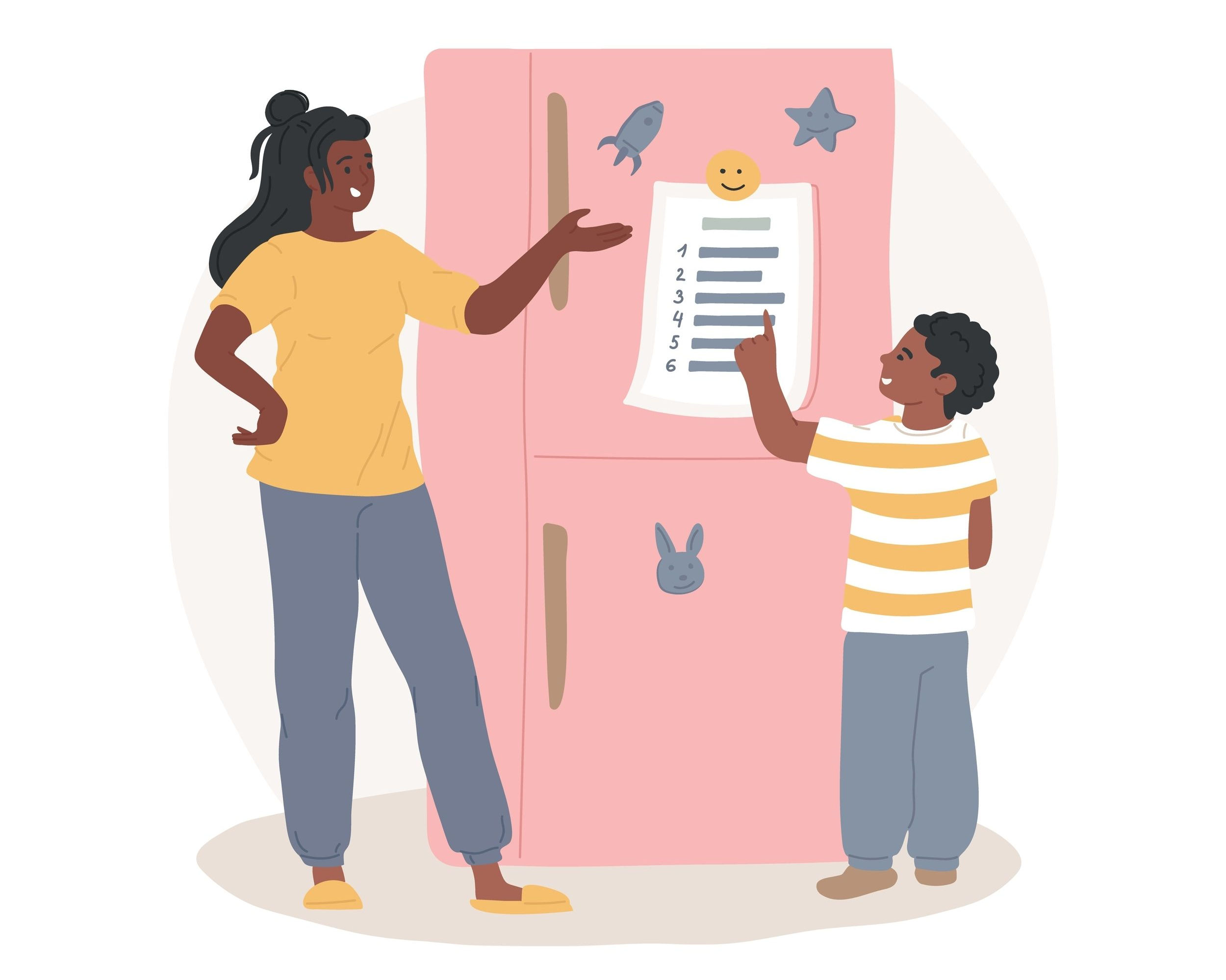
There are important rules that all kids need to obey while in the kitchen. These rules are so important because they help prevent dangerous accidents and injuries. When parents go over these rules, pay attention and always follow them. Two of the most important kitchen rules are to never take risks and ask for help if necessary.
A lot of kitchen rules are about knives. Never grab, carry, or handle knives without permission from a parent or adult. Only use them and other sharp objects when supervised by an adult.
Follow your parents’ rules about the stove and oven. Depending on your age, do not touch them unless supervised and given permission. If given permission to use the stove, be careful not to get burned or scalded! Turn all pot handles inward and don’t touch anything on the stove, on an indoor grill, or in the microwave with bare hands. These things can be hot and cause terrible burns.
When cooking or handling raw meat, always wash up. Raw food has a lot of bacteria that are easily spread around the kitchen and make people sick. Never lick and reuse utensils or taste-test food with your fingers. If tasting food, use a new, clean utensil each time or wait until the food has finished cooking.
Wear Proper Attire
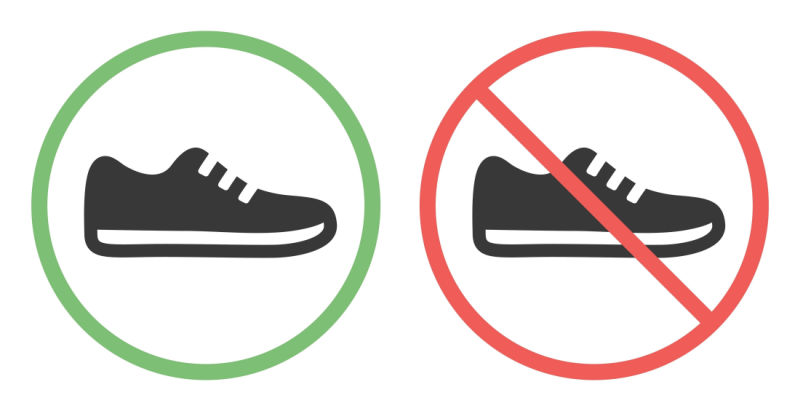
While in the kitchen, it’s important to dress the part. That means wearing clothes that are clean, not too loose, or long-sleeved. Long sleeves and baggy clothes can get in the food or catch fire. Wear clothing that fits and has short sleeves. Wearing an apron will keep food splatter off of clean clothes. Another thing that shouldn’t get in food is hair. Make sure to tie it back so that it, and the food, stays clean.
Bare feet are also a no-no in the kitchen. If hot liquid spills, it can burn your feet and if a knife falls, it can cut your toes. Both will hurt badly! Always wear shoes with closed toes when in the kitchen.
Safety Zones
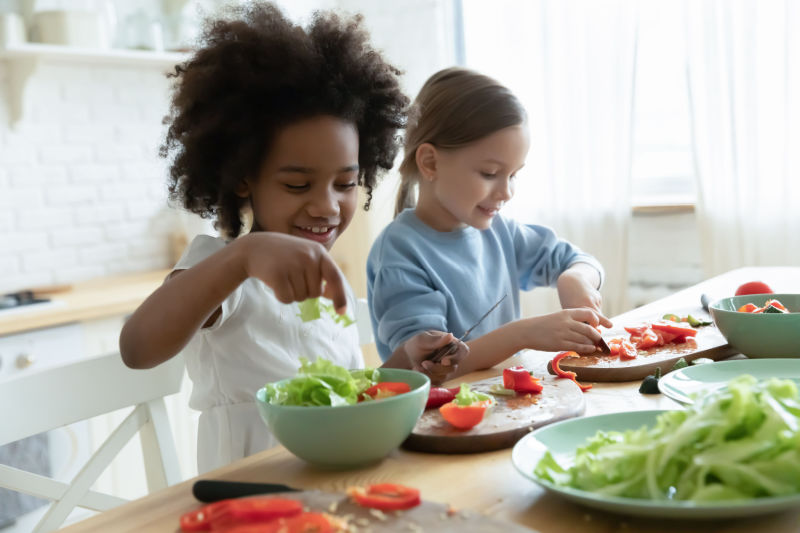
Safety zones are areas in the kitchen where there are no dangerous tools or objects. It’s a space where small children can sit and help do simple things in the kitchen. Things that get hot, like indoor grills or toasters and things that have cords that hang down, are some items parents might remove from kitchen safety zones.
Use the Proper Equipment
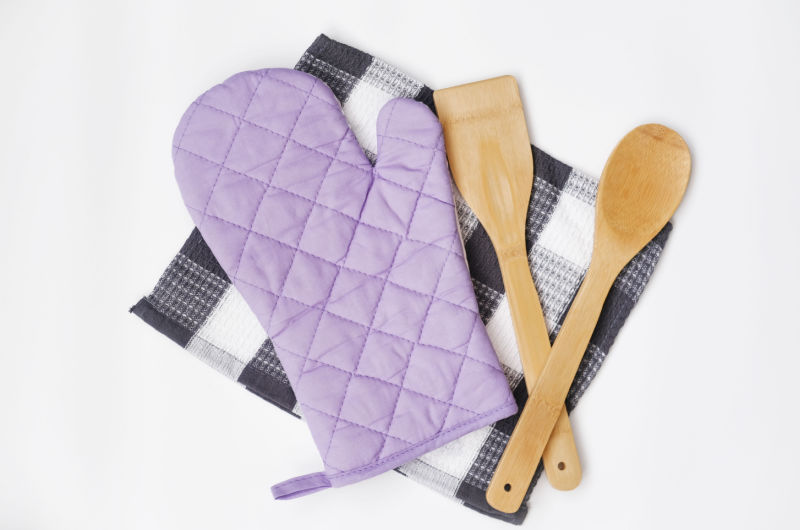
While helping in the kitchen, it’s important to use the right equipment or tools for safety. Only touch things the adults in the kitchen have said are safe for kids to use. Examples of safe equipment include nylon or plastic knives that aren’t as sharp and are easier for kids to hold or plastic salad spinners for veggies and lettuce. For touching hot dishes, use oven mitts that are the proper size for kids.
Supervise
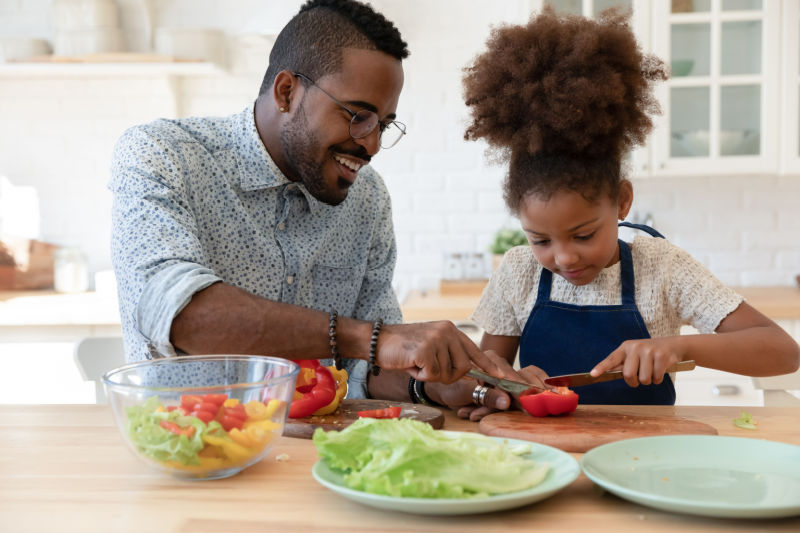
Because there are so many ways to get hurt, a parent or an adult should always watch kids in the kitchen. Only use electric appliances like blenders and mixers when an adult is present. Don’t boil water without a parent supervising. As kids get older and more experienced in the kitchen, they’ll need less supervision.
Clean Up
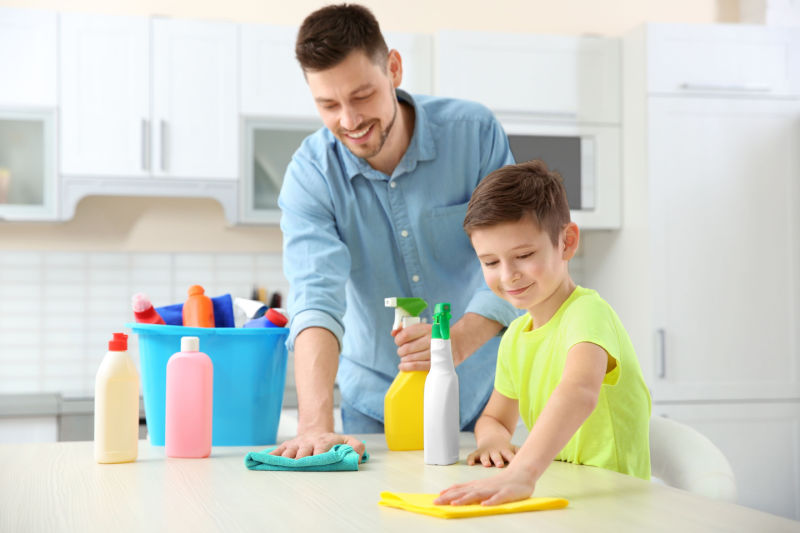
Keep the kitchen clean before, during, and after cooking. Spills that are not cleaned up will continue to build up bacteria that will contaminate other foods and tools that touch them. Floors can become slippery and dangerous when no one cleans up spills. Cleaning spills when they happen also saves time later.
Don’t leave a mess! After the cooking, there’s still more that needs to be done. Put away ingredients, rinse off dirty dishes, and put them in the dishwasher. Use a broom and sweep up anything that may have fallen onto the floor. If you’re allowed to touch the stove and oven, make sure they are off.
Have Fun and Enjoy!
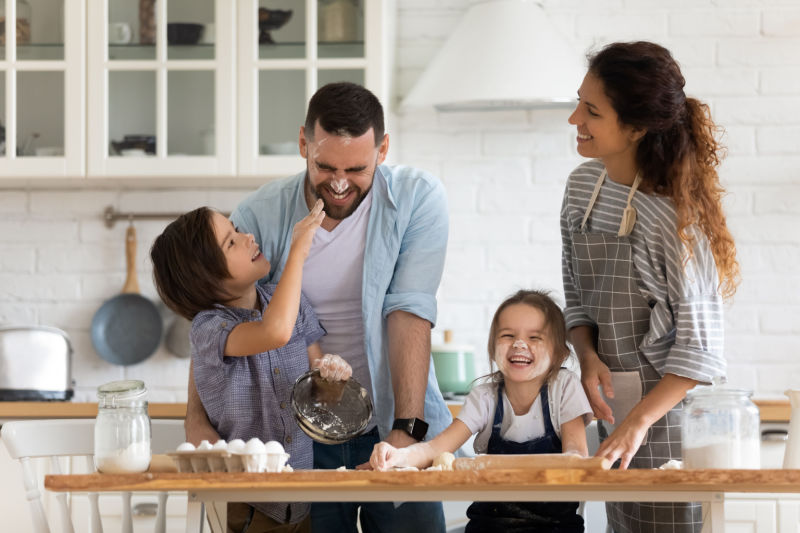
Cooking is a lot of fun! Sure, it seems like a lot of rules, but they help keep you from getting sick or hurt. Learning how to make your favorite food is a great feeling. Think about how cool it will be to share tasty food that you made with family and friends. Just remember to tell them you made it!
